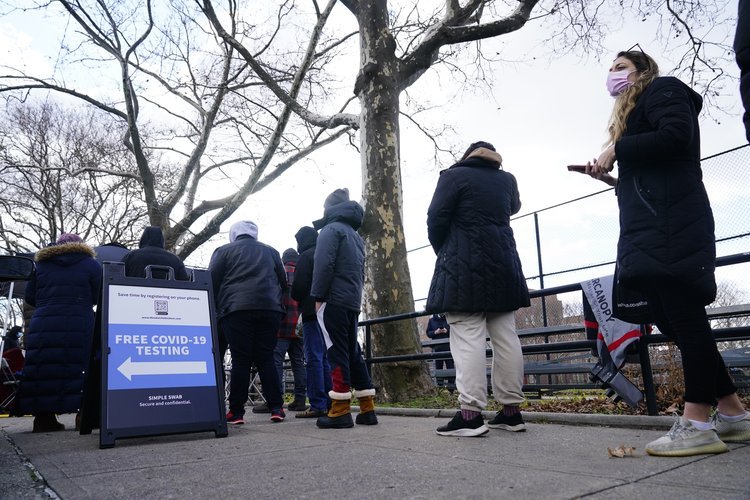NYC quietly changes COVID risk assessment tools
/The city is continuing to distribute at-home tests, but has closed nearly half of all brick and mortar sites since February. AP file photo by Frank Franklin II
By Rachel Vick
As COVID-19 cases begin to again see a rise in New York City, the city’s health department has quietly changed the way it presents data on the virus to the public, no longer showing whether cases are on the rise, in decline or holding stable.
The New York City Department of Health and Mental Hygiene’s website features numerous displays of the city’s COVID-19 data. It previously included a table that showed the number of cases, the percentage of positive tests over the past week and month on average, the number of hospitalizations and the number of deaths. Next to each of those indicators was a column that showed whether the indicator was increasing, decreasing or stable. That column is no longer shown.
The Department of Health and Mental Hygiene did not respond to the Eagle’s requests for comment on the reasoning behind the removal of the column, which previously could be used by New Yorkers to assess their risk of contracting COVID-19.
Other data displays on DOHMH’s website continue to show the overall trend of the virus in the city.
“Making it more difficult to readily access the COVID numbers is never a good thing,” said Queens City Councilmember Joann Ariola, who sits on the council’s Committee on Health.
“It’s important that New Yorkers can quickly and easily see whether or not the virus is increasing or decreasing in the city, and it is very strange to me that the Department of Health would move to obscure those numbers, or make them less easily accessible,” she added.
In addition to the health department data, New Yorkers could previously use the city’s color-coded risk system to evaluate their risk of contracting the virus, however, that system was also eliminated at the start of the month.
The city’s website for the system now reads, “We are re-evaluating the city’s COVID Alert system. Check back here for updates in the coming weeks.”
Speaking to reporters last week, the city’s health commissioner, Dr. Ashwin Vasan, said that while cases may be rising, the city’s response to the virus more than two years into the pandemic should change.
“While we continue to see a lot of transmission here in New York, we’re also at a different phase of the pandemic that demands new analytical tools to match our assessments and communications about risk with reality,” Vasan said, according to the New York Times.
On a seven-day average as of July 5, the city is recording 3,586 cases per day with a percent positivity rate of 13.9 percent, according to city data.
Queens neighborhoods Ozone Park and Little Neck have the highest percent positivity rates in the city at 24 percent.
As cases rise, diagnostic testing — both PCR and antigen — are both down, according to DOHMH data.
According to Gothamist, the number of NYC Health + Hospitals testing sites went from 270 to 144 between February and April. During the week of June 27, there were 38 H+H sites open in Queens.
Test and Trace spokesperson Adam Shrier pointed Gothamist to the accessibility of at home tests — which are generally not reported to be included in the data.
Ariola suggested the closures could be an indication of the threat of COVID decreasing, pointing to the decline in hospitalizations and deaths.
“This might be a very real signal that we are actually on our way out of the pandemic,” she said.




